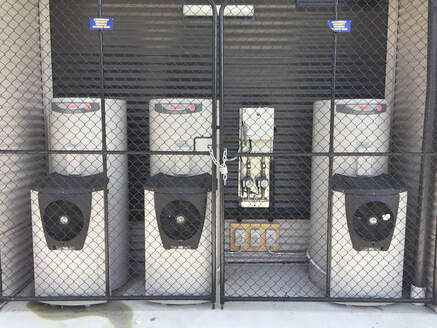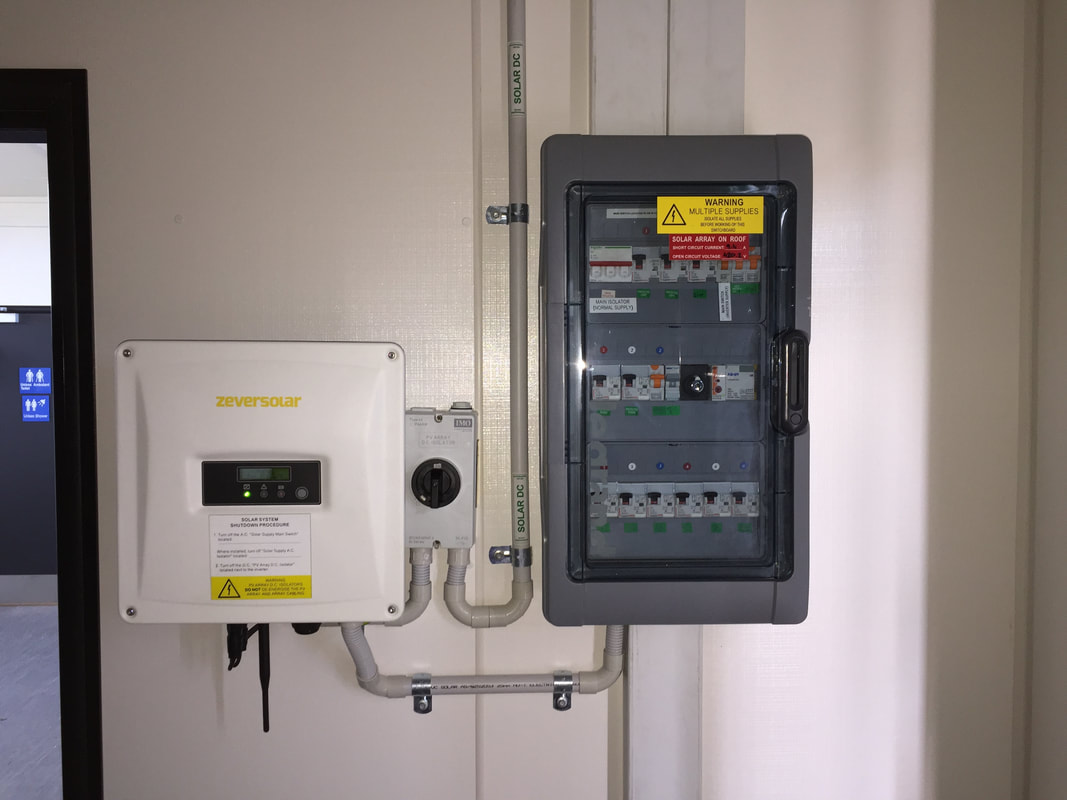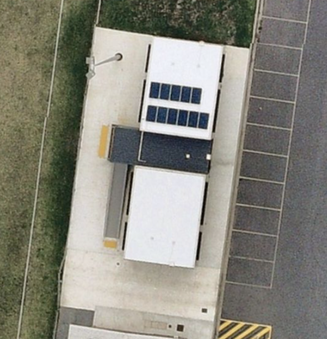What is driving action to get off gas in Whittlesea?Whittlesea’s story is a little different to that of other councils. Getting off gas has been a practical, primarily officer-driven effort so far. There is hope that it will also be embedded in Whittlesea’s next climate strategy and that this will provide more traction.
“Just do it. The technology is there and it works. The numbers stack up.” |
Duffy Street Pavilion hot water heat pumps.
|
What has happened so far? Whittlesea commissioned research on the emissions profile of their community and found that gas was a large part of their community emissions.
They have also drilled down into local gas consumption data to inform a community engagement process, especially in growth areas. In terms of Whittlesea Council’s efforts to reduce their own gas use, they have been installing electric hot water, heating and ovens/cook tops in new buildings and redevelopments, particularly in community centres and kindergartens. What have been the benefits?Whittlesea officers have found that getting off gas in terms of their own facilities has provided environmental benefits while being cost-neutral.
They also see a benefit to providing an example to the community of what is possible. Inverter at Duffy Street.
|
What’s next?As well as talking to the community about greenhouse gas emissions, Whittlesea staff will also engage with developers. LendLease is already planning a gas-free retirement village in Epping. Officers are advocating for all new council buildings to be gas-free and will commission a feasibility study into electrifying all of their major facilities in the short to medium term. Part of the effort to move away from gas in facilities has been to install solar PV and battery systems at shared community / sports facilities with the assistance of a State Government Growing Suburbs grant. Whittlesea is investigating ammonia heat pumps as a possible gas-free solution for the Mernda Aquatic Centre. What have been the challenges?olar hot water systems have proven difficult to maintain but are now being replaced with instantaneous electric hot water for smaller sites, and heat pumps for larger (but still domestic-sized) systems.
Resourcing has been a significant challenge. At the moment there is just one person in the Sustainable Projects Unit. This has meant that some things have had to be put on the backburner, such as greenhouse gas reporting, gathering data and strategic work. Like other councils, Whittlesea have experienced barriers when working with the industry. When officers suggested a heat pump for a new scout hall, this gained no traction - the local provider believed that heat pumps wouldn’t work in Victoria. “We are so addicted to gas… But it's just habit.” One of the barriers identified with working with the community on getting off gas is that generally in Melbourne, “We are so addicted to gas… But it's just habit.”
|
How is it being led and embedded in the organisation?Most action is being driven by the Sustainable Projects Unit, embedded within the Capital Delivery team for the past five years but maintaining a strong connection with the sustainability team.
One of the enabling factors for recent work has been a supportive manager in the Capital Delivery team as well as a cohort of project managers who are enthusiastic about ESD being incorporated into their projects. The embedding of the Sustainable Projects Unit means daily contact with these project managers, providing ready access to information about ESD and sustainability and allowing the development of strong relationships and trust. Whittlesea staff see their efforts as ‘the start of the journey’ and they see their organisation maturing, trust and collaboration growing, and the Sustainable Projects Unit becoming known as the go-to people. What advice do you have for other councils?“Just do it. The technology is there and it works. The numbers stack up.” Managers at Whittlesea who are “numbers-driven” have been on board because it makes sense financially.
When it comes to engaging the community, councils need to gather information to show them it's worth-while, that others are doing this - provide examples, normalise it and create new norms. Solar system installed at Duffy Street Soccer Pavilion.
|



